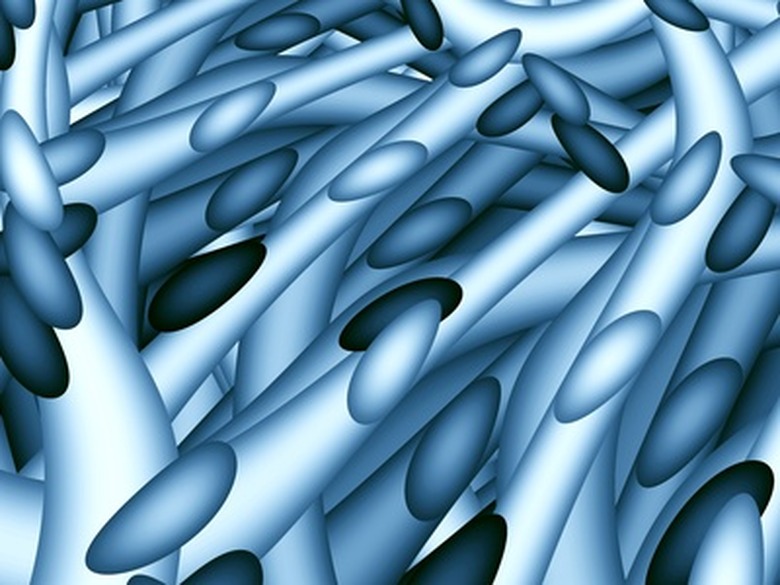How To Compare TEM & SEM
Transmission electron microscope (TEM) and scanning electron microscope (SEM) are microscopic methods for viewing extremely small specimens. TEM and SEM can be compared in specimen preparation methods and applications of each technology.
TEM
TEM
Both types of electron microscopes bombard the specimen with electrons. The TEM is suitable for studying the inside of objects. Staining provides contrast and the cutting provides ultra thin specimens for examination. TEM is well-suited for examination of viruses, cells and tissues.
SEM
SEM
Specimens examined by SEM require a conductive coating such as gold-palladium, carbon or platinum to collect excess electrons that would obscure the image. SEM is well-suited to view the surface of objects such as macromolecular aggregates and tissues.
TEM Process
TEM Process
An electron gun produces a stream of electrons that are focused by a condenser lens. The condensed beam and transmitted electrons are focused by an objective lens into an image on a phosphor image screen. Darker areas of image indicate that less electrons were transmitted and that those areas are thicker.
SEM Process
SEM Process
As with the TEM, an electron beam is produced and condensed by a lens. This is a course lens on the SEM. A second lens forms the electrons into a tight, thin beam. A set of coils scans the beam in a similar manner to television. A third lens directs the beam into the desired section of the specimen. The beam can dwell upon a specified point. The beam can scan the entire specimen 30 times per second.
Cite This Article
MLA
Sells, Harvey. "How To Compare TEM & SEM" sciencing.com, https://www.sciencing.com/compare-tem-sem-7771293/. 24 April 2017.
APA
Sells, Harvey. (2017, April 24). How To Compare TEM & SEM. sciencing.com. Retrieved from https://www.sciencing.com/compare-tem-sem-7771293/
Chicago
Sells, Harvey. How To Compare TEM & SEM last modified March 24, 2022. https://www.sciencing.com/compare-tem-sem-7771293/
